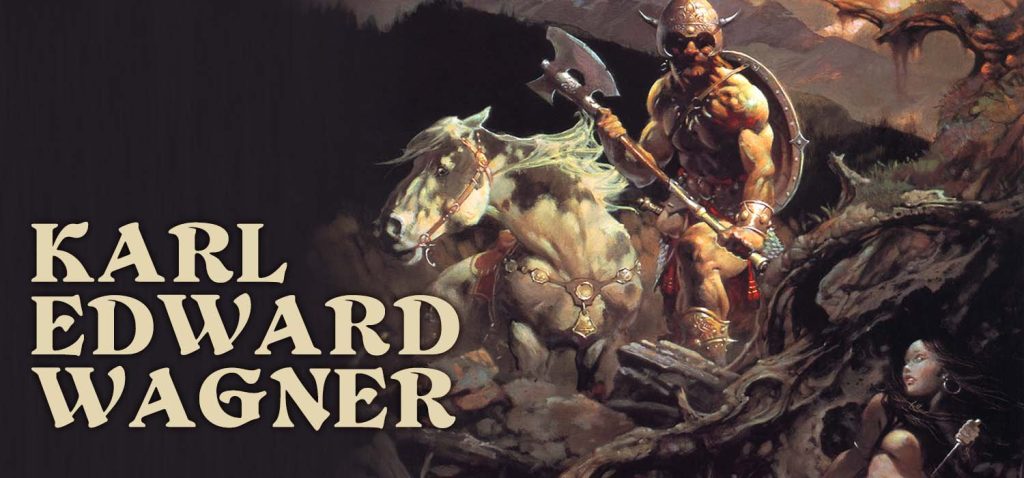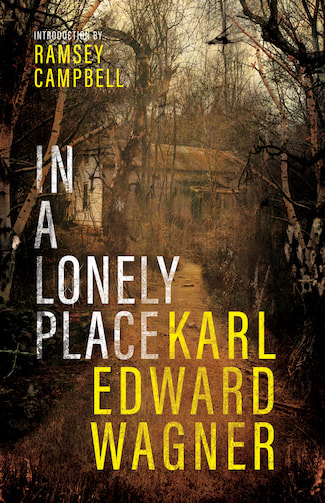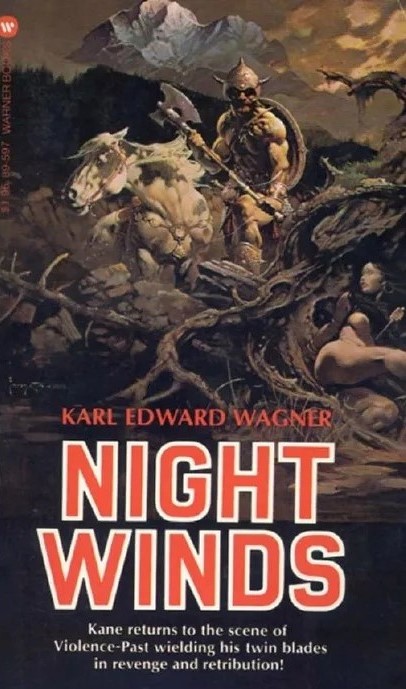(Night) Winds Blowing for Kane – Toward a Karl Edward Wagner Revival
by Brian Murphy
As of this writing there are rumors—and more than rumor—of a Karl Edward Wagner revival, including his sword-and-sorcery/dark fantasy stories of Kane. I for welcome our immortal hero-villain overlord, and in the meantime encourage anyone who has not read the Kane stories to seek out the collection Night Winds.
But first, evidence of a KEW comeback.
2020 saw the release of The Last Wolf, a wonderful documentary about Wagner’s life. The film covers the details of Wagner’s life, from his birth in 1945 to his untimely death in 1994, as told through a series of wide-ranging interviews with Wagner’s siblings, his ex-wife, childhood friends including John Mayer, and several horror and fantasy luminaries including the likes of Peter Straub, Dennis Etchison, Stephen Jones, David Drake, S.T. Joshi, and Ramsey Campbell, among others. We get everything from Karl’s precocious early days in the classroom as the youngest of four children in Wagner household, to his days as a medical student, breaking into writing, hanging out with the likes of Manly Wade Wellman, founding Carcosa Press, and tearing up the scene as a charismatic figure at fantasy and horror conventions. Recommended.
Valancourt Books just reissued In a Lonely Place (1983), a classic collection of horror stories. This new edition includes all the stories from the original, plus an additional story, the author’s afterword from a crushingly expensive Scream Press limited edition, and a new introduction by Campbell, a multiple World and British Fantasy award winner and KEW fan. You can buy that now. The Warner paperback original regularly fetches more than $100 on the secondary market, so this is wonderful news.
On the rumor-ish side, publisher Baen is reportedly laying the groundwork for a long-awaited reprint of the Kane stories. As I understand it, the estate holders have been approached and some tentative agreements are in process. This would be an enormous win for sword-and-sorcery fans, who have been deprived of good, reasonably priced print editions of these wonderful stories for far too long. Today you are limited to what I understand to be poorly edited Kindle editions, very expensive/out of print hardcovers by Centipede Press, or increasingly hard-to-find though still obtainable Warner paperbacks from the 70s/80s.
I own the latter, and recommend the collection Night Winds for someone new to Kane/Wagner and seeking to get into the semi-immortal and cursed sword-and-sorcery “hero.” This one can still be had for a decent price. While many offer up the short novels Bloodstone or Dark Crusade as a Kane launching pad, I always stump for Night Winds. It’s a collection of short stories that showcase the many sides of this multi-faceted character, and if you start getting into them and don’t like what you’re reading, well, it’s only a short story, you’re not committed to a novel.
Following is a review of that book; warning some spoilers follow.
Night Winds collects six short stories, some better than others but all good, and a couple are truly excellent. By the time Wagner started writing his Kane stories in earnest the sword-and-sorcery subgenre had grown a bit sclerotic, with authors cranking out Conan clones (“Clonans”) and publishers plastering Robert E. Howard’s name and creation on the cover of second-rate pastiches and homages, usually much larger than the actual author of the volume in question and declaring them to be “in the tradition of.”
Against this bloated landscape KEW penned “Undertow,” the first story in Night Winds. Dragar of “Undertow” is naive and dangerously overconfident barbarian warrior—an obvious allusion to Conan circa “The Tower of the Elephant.” But Wagner has a much darker fate in store for his would-be hero and lover. Kane is rather a bastard and semi-abusive boyfriend in the story, in which he revives a beautiful dead redhead, Dessylyn, with a drug that must be taken regularly or she will die.
In the running for best in the collection is “Two Suns Setting.” Wandering in the desert Kane falls in with a giant, Dwassllir, among the last of his once great race. Dwassllir is seeking the tomb of the dead giant king Brotemllain, upon whose head rests the fabled jeweled crown. Dwassllir is not out to rob a tomb but wants to revive the spirit of the dead king and lead his once heroic people back from the brink of extinction (he is a setting son/sun). Kane and Dwassllir enter the tomb and battle a pale, sun-blind, monstrous sabretooth tiger. As much as the action I love this story for its reflections upon the passing of heroic ages. There is an equivocal view of mankind, now in ascendancy but physically, morally, and spiritually lacking when compared to this old race of giants.
In “The Dark Muse” we find Kane hanging out in a seedy tavern with a poet, Opyros, despondent because he is unable to summon in words the images of dark splendor that came to him during a fever-dream. Opyros has turned to alcohol and drugs to evoke the muse, and plays with fire when Kane gets hold of a dark idol, the eponymous dark muse of the story, with which he can enter a dreamworld where dreams are dangerous and dark beyond measure. The story feels biographical as Wagner himself was searching for words and gripped with drug and alcohol use. The long poem/story Opyros is working on is called “Night Winds,” all very meta and sly winking (he’s also working on a second piece called “Gods in Darkness,” the name of another Kane collection).
In “Raven’s Eyrie” Kane and his bandit army are ambushed and surrounded. A small group cuts its way out, and Kane is gravely wounded by a crossbow bolt. The survivors hole up an old, semi-ruined inn/tavern called Raven’s Eyrie. The pursuers brave a night that the locals avoid (reportedly demon-haunted, and a few men are picked off in the night) and chase the survivors to Raven’s Eyrie. Most are killed; Kane, wounded and in bed, feigns death via some spell or deep breathing method, and manages to slip out a window and escape into the bowels of the inn where his uncanny healing allows him to regroup, and seek revenge.
“Lynortis Reprise” is another awesome tale. Lynortis was once a near-impregnable fortress on a mountainside that was broken in the bloodiest two-year siege imaginable. Some 300,000 men were killed in a battle that left Lynortis in ruins and the battlefield a mess of pits, bones, smashed siege equipment, and unexploded shells. There is a strong undercurrent of anti-war sentiment, perhaps referencing Vietnam, which had just ended (the story was originally published in 1974).
The last story in the collection, “Sing a Last Song of Valdese,” is a tale of revenge 49 years in the making, seven times seven. Six disparate men who savagely killed and raped a young bride and disfigured and maimed her fiancé are summoned to an old inn where a decades-long plot of revenge unfolds. In the ensuing decades the maimed fiancé learns the dark arts of sorcery, and his bride, Valdese, roams the woods as a lamia. Kane is peripheral to the tale; he is a bit of a deus-ex-machina who figures into the resolution, but it works.
Karl Edward Wagner’s Night Winds is an awesome collection, and I hope 2023 brings the news that it will be available to a ready audience for this budding sword-and-sorcery revival.
Brian Murphy is the author of Flame and Crimson: A History of Sword-and-Sorcery (Pulp Hero Press, 2020). Learn more about his life and work on his website, The Silver Key.






